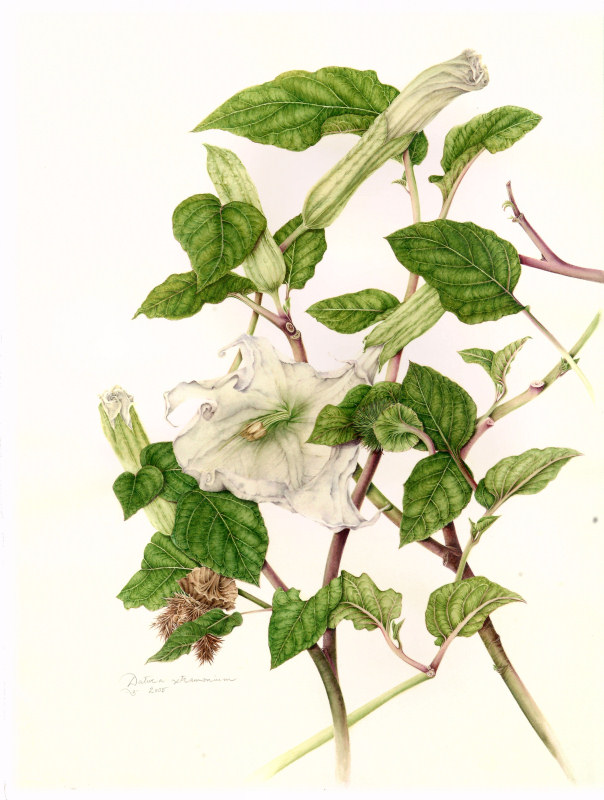2008

The genus name is from the Sanskrit dhatt?rah (plant, thorn apple) and stramonium is originally from Greek, strychnos for “nightshade” and maniakos for “mad”. It is also known as Devil’s Apple, Apple of Peru, Stinkweed, Jamestown-weed. Jimson-weed, Devil’s Trumpet & moonflower. Little wonder that Susan spent days researching the correct identity of her daunting spiny seedpod, before confirming it as D. stramonium.
A member of the nightshade family, it grows wild the world over, wherever it finds warm and moderate climes. Datura has a long history in folk medicine for the treatment of asthma, as an analgesic during surgery or bonesetting, in inducing abortions, providing relief for sore throat or toothache and in getting rid of parasites—to name just a few of its many uses. It was also an essential ingredient in love potions and witches’ brews if you ever needed some!
All parts of the Datura plant contain varying amounts of tropane alkaloids, atropine, hyoscyamine and scopolamine which are deliriants, or anticholinergics, responsible for both medicinal and hallucinogenic/ psychoactive effects. Uninformed recreational users run a high risk of fatal overdose because ingesting a quantity only slightly higher than the therapeutic dosage can be deadly. Yet for centuries in India as well as in the Americas, D. stramonium has been smoked and ingested for the powerful visions it induces and for providing a means of communication with the spirit world.
Throughout the summer fragrant trumpet-shaped white flowers bloom at night, visited by nocturnal pollinators, and are a joy to behold next morning. Once the tubular green calyx releases the white folds of the corolla, the dance of the unfurling flower is a challenge to paint! As for the thorny, spiny seed-pod—it bursts open with an explosive boom, dispersing its seeds widely and startling me so that my brush flew out of my hand. Believe me, plants are neither quiet nor ever still!